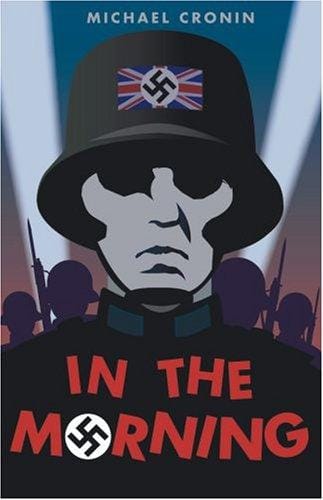Against the Day: An 800-Word Guide to Pynchon’s Epic
Explore Against the Day with an overview of plot, themes, style, historical context, and tips for readers in this concise guide.

Introduction to Against the Day
Thomas Pynchon released Against the Day in 2006, delivering a sprawling 1,000-plus-page epic that bends genres, timelines, and even the laws of physics. Set roughly between the 1893 Columbian Exposition and the years just after World War I, the novel follows dozens of characters ranging from anarchist mathematicians to balloon-borne boy adventurers. While its sheer scale intimidates many newcomers, Against the Day rewards persistence with dazzling prose, intellectual playfulness, and a surprisingly emotional core. This overview breaks down the plot, themes, style, and historical context to help readers navigate Pynchon’s most ambitious narrative.
Plot Overview: A Globe-Spanning Quest
The story opens with the Chums of Chance, a group of youthful aeronauts aboard the airship Inconvenience. Their adventures provide a whimsical gateway into the novel before the narrative widens to include the Colorado mining town of Telluride, the academic enclaves of Göttingen, and the labyrinthine streets of pre-revolutionary Europe. The sprawling canvas centers on the Traverse family, particularly brothers Reef, Kit, and Frank, who seek revenge against robber baron Scarsdale Vibe for their father’s death. As the brothers cross continents and fronts, side plots branch into Balkan intrigue, occult photography, and secret Tesla-inspired weaponry.
Instead of a single linear arc, Against the Day offers interwoven threads that sometimes converge, sometimes drift apart like the light waves Pynchon frequently invokes. Doublings, alternate identities, and literal gaps in time create a kaleidoscopic effect. Characters disappear into parallel Icelandic spar crystals, resurface in Mexico during the revolution, or jump aboard a Venetian gondola that may be sailing through another dimension. The Chums themselves appear to age slowly, suggesting that they might inhabit a comic-book reality existing alongside more tragic human timelines.
Major Themes: Light, Capital, and Resistance
Light is the novel’s master metaphor. From the refractive properties of Iceland spar to the dawn of cinema, Pynchon explores how light can illuminate or deceive. The scientific debates of the era—wave versus particle, Euclid versus Riemann—echo through the characters’ ethical dilemmas. Capitalism and imperial power form a second dominant theme. Scarsdale Vibe and his industrial cronies manipulate governments and militias to secure mineral rights, illustrating how capital bends not only markets but also space and time. Against this force stands an array of anarchists, union organizers, and utopian dreamers struggling to envision alternative futures.
Style and Structure: Pynchon at Play
Readers familiar with Pynchon will recognize his trademark wordplay, pastiche songs, and sudden shifts in diction. Against the Day amplifies these tendencies, moving effortlessly from nickel-odeon slapstick to dense mathematical exposition. Although the prose can feel daunting, the novel is carefully structured in five books that roughly track historical phases: pre-1893 optimism, geopolitical turbulence, global war, and tentative aftermath. Frequent subheadings within the text simulate the jump-cuts of silent film, while recurring motifs—doublers, vector calculus, and luminous aether—bind the disparate episodes together.
Historical Context: The Shock of the Modern
The period between the Chicago World’s Fair and World War I witnessed unprecedented technological acceleration. Radio, cinema, electric power grids, and aviation compressed distance and redefined perception—developments mirrored in Pynchon’s fascination with light and electromagnetism. At the same time, colonial borders were redrawn, labor movements radicalized, and mathematicians challenged Euclidean certainties. By embedding fictional characters inside real events such as the Ludlow Massacre or the Siege of Sarajevo, Pynchon dramatizes how individuals experienced the modern world’s disorienting velocity.
Tips for Reading Against the Day
First, do not panic at the cast list; treat the novel like serialized adventure and enjoy each episode on its own terms. Many readers keep a simple notebook of recurring names, which quickly demystifies connections. Second, lean into the language. Songs, puns, and outdated slang establish mood even when plot details blur. Third, allow the themes to emerge organically. The scientific tangents about quaternions or bilaterally symmetric time travel may seem obscure, yet they reinforce the book’s larger meditation on possibility. Finally, remember that humor pervades the novel. Laugh when the prose invites it; the jokes are part of the map.
Critical Reception: From Bewilderment to Acclaim
Upon release, Against the Day polarized critics. Some dismissed it as an indulgent doorstop, while others hailed it as Pynchon’s richest achievement since Gravity’s Rainbow. Over time, scholarly consensus has highlighted the novel’s prescient commentary on global capital and the surveillance state, themes that feel increasingly contemporary. Fans celebrate its unexpectedly warm portrayal of friendship and family, especially in the Traverse storyline. Today, the book sits firmly in the postmodern canon, studied in university courses and cherished by adventurous readers who crave fiction that thinks as hard as it feels.
Conclusion: Why the Journey Matters
Against the Day invites us to contemplate how history might refract like light through Iceland spar, splitting into paths of oppression and resistance, despair and hope. By juxtaposing comic fantasy with real political violence, Pynchon refuses easy answers yet affirms the value of imaginative flight. Whether you board the Inconvenience for pure escapism or trace electromagnetic equations in the margins, the novel offers a unique voyage across mind, map, and memory. In the end, Against the Day is less about arriving at a destination than about staying luminous, curious, and defiantly alive along the way.



